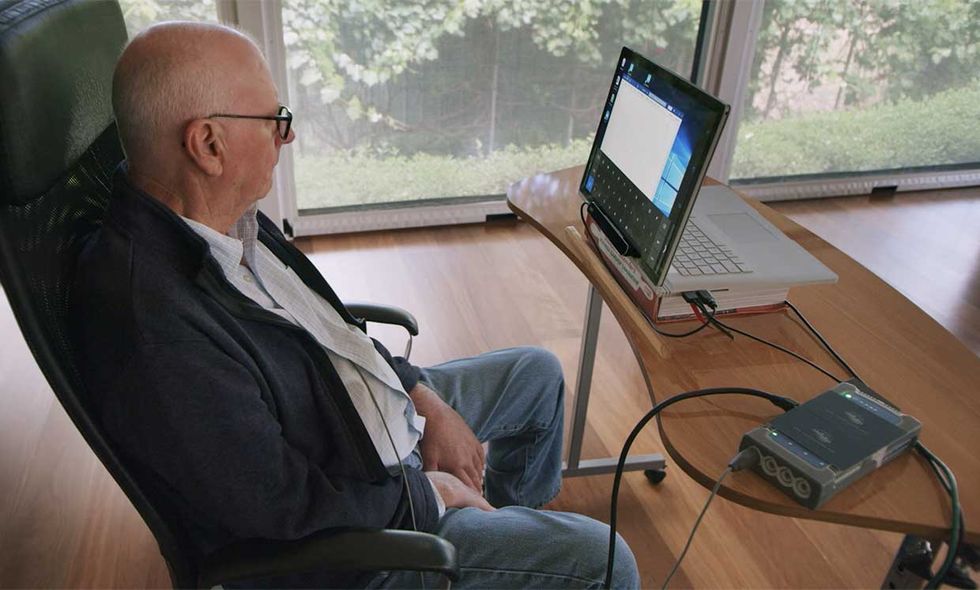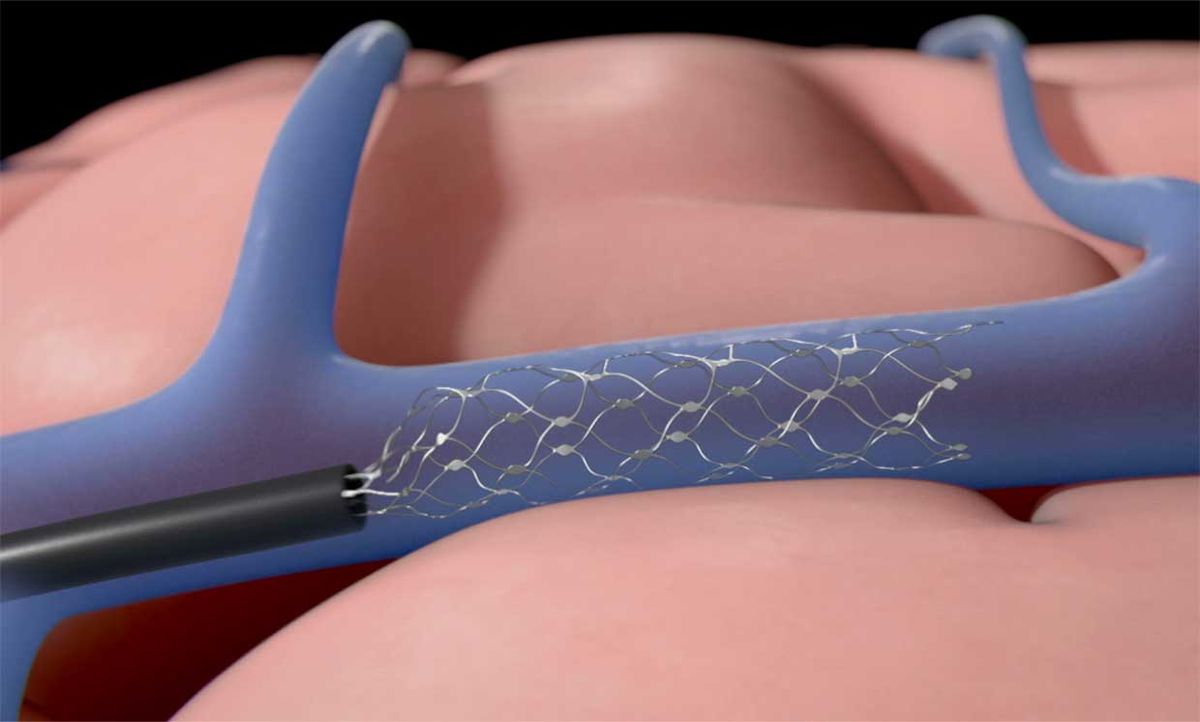Two Australian men with neuromuscular disorders regained some personal independence after researchers implanted stent-like electrodes in their brains, allowing them to operate computers using their thoughts.
This is the first time such a device, dubbed a “stentrode,” has been implanted in humans, according to its inventors. The system also makes real-world use of brain-computer interfaces (BCIs)—devices that enable direct communication between the brain and a computer—more feasible.
The feat was described today in the Journal of Neurointerventional Surgery. “This paper represents the first fully implantable, commercial BCI system that patients can take home and use,” says Tom Oxley, founder of Melbourne-based Synchron, which developed the device.
Researchers have been experimenting for over 15 years with sensing human brain activity and converting it directly into computer commands. Most of these systems involve open brain surgery and leave hardware protruding from the head so that the systems can be studied in labs. It’s highly experimental, and only a handful of people have had it done.
The stentrode offers a less intrusive way to get electrodes to the brain. The device is squeezed into a catheter and placed in the jugular vein in the neck. From there the catheter snakes up through blood vessels until it reaches the motor cortex of the brain. Then it releases the stentrode, which holds 16 electrode contacts and springs out into a tube-like scaffold that fits against the walls of a blood vessel in that section of the brain.
The stentrode is connected by a lead down to a device that is surgically implanted in the chest. The device provides power and data transmission. An external device interprets the signals from the brain using machine learning algorithms and converts them to computer commands.
The quality of the signals is sacrificed a little by the electrodes being in a blood vessel, rather than directly on brain tissue. But it’s good enough to allow the two participants in the study to accurately type up to 20 characters per minute with predictive text disabled, and do online shopping and banking, all without lifting a finger or using voice commands.

The two participants who received the stentrodes suffer from amyotrophic lateral sclerosis (ALS), also known as Lou Gehrig’s disease. The condition causes loss of muscle control and paralysis. Being able to remotely contact his wife and to be productive on a computer “has been life-altering,” says Graham Felstead, one of the two men with stentrode implants.
Operating the system is painstaking. Felstead controls the computer by thinking about squeezing his right leg. These thoughts translate into commands such as left click or right click or zoom. A separate eye tracker allows him to move the cursor with his eye movements. The first thing Felstead typed was “We’re going to need more coffee.” Felstead has been using the device on his own for over a year now.
Being able to use a BCI system at home, outside the lab, is a huge leap for this budding research sector. The BrainGate consortium and other groups have used BCI to enable people with neurologic diseases and paralysis to operate tablets, type eight words per minute and control prosthetic limbs using only their thoughts. But these systems involve hardware protruding from the skull and are relegated to a laboratory setting.
Elon Musk in August said that his company, Neuralink, had built a self-contained neural implant that can wirelessly transmit detailed brain activity without the aid of external hardware. But Neuralink so far has only demonstrated the device in pigs.
“It’s all hypothetical until we put the device in a human,” says Oxley. One of Synchron’s next moves is to seek permission from the U.S. Food and Drug Administration for permission to implant the device in people in the U.S.
Emily Waltz is a features editor at Spectrum covering power and energy. Prior to joining the staff in January 2024, Emily spent 18 years as a freelance journalist covering biotechnology, primarily for the Nature research journals and Spectrum. Her work has also appeared in Scientific American, Discover, Outside, and the New York Times. Emily has a master's degree from Columbia University Graduate School of Journalism and an undergraduate degree from Vanderbilt University. With every word she writes, Emily strives to say something true and useful. She posts on Twitter/X @EmWaltz and her portfolio can be found on her website.



